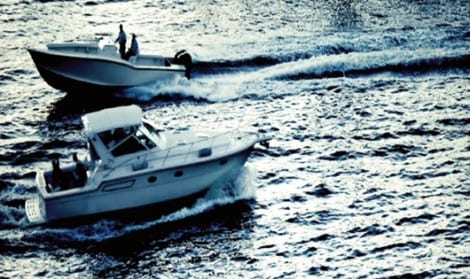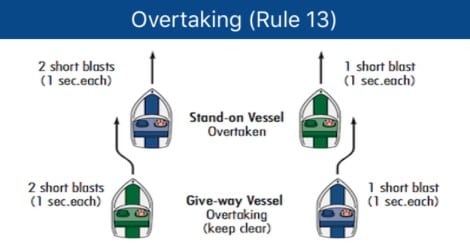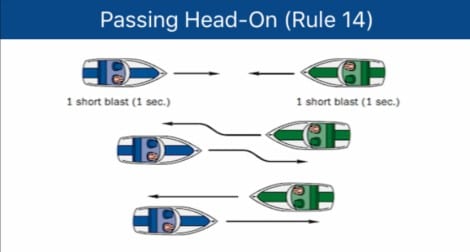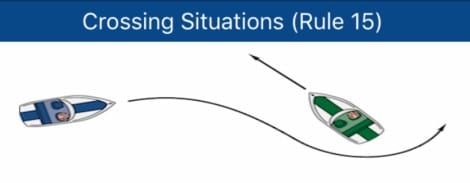 By Bob Currie, Recreational Boating Safety Specialist
By Bob Currie, Recreational Boating Safety Specialist
U. S. Coast Guard Auxiliary Station Galveston Flotilla
A key part of increasing Recreational Boating Safety (RBS) involves examining statistics for patterns of behavior that need to be corrected. The last year for which we have complete RBS accident data is 2018. That makes sense because we are still in 2019, but at this point the data is almost a year old and doesn’t reflect improvements (hopefully) we have made in 2019. Overall, we had a slight decrease in boating accidents in 2018 over 2017. I hope that trend continues in 2019, because we have been trying hard to reach the boating public and instill safe procedures on the water. So, I sat down with the statistics and decided to see what the number one cause of boating accidents was.
The Station Galveston Flotilla of the US Coast Guard Auxiliary operates out of the USCG Station Galveston base on Galveston Island. They aid the Coast Guard by providing maritime observation patrols in Galveston Bay; by providing recreational boating vessel safety checks; and by working alongside Coast Guard members in maritime accident investigation, small boat training, Aids to Navigation verification, and watch standing.
Collisions with Other Recreational Vessels
Yep. The number one cause of boating accidents was collision with another recreational boat. In 2018 there were 1103 reported collisions with another recreational boat, making this type of incident the number one cause of boating accidents. In second place was collision with a fixed object, with 470 of such incidents in 2018. In 1058 of the 1103 cases, persons were ejected from the boat. Those 1103 collisions resulted in 45 deaths and 689 injuries. The good news is that these figures represent a ten percent decrease in total collisions with another recreational vessel, total deaths, and total injuries. Each of these accidents could have been prevented by simply following the Rules of the Road, also known as the Inland Navigation Rules and the International Regulations for Preventing Collisions at Sea (COLREGS). You can access those rules from your smart phone. You are required to follow them. Let’s look at the most important rules.
Rule 5: Post a Lookout
Designate someone to watch for dangers that may come from any direction. Every vessel shall at all times maintain a proper lookout by sight and hearing as well as by all available means appropriate in the prevailing circumstances so as to make a full appraisal of the situation and of the risk of collision.
Rule 6: Safe Speed
Except where speed is restricted by regulation or the waterway is marked by a “No Wake” or “Slow Speed” aid, you must judge “safe speed” for yourself. You must take into account the following:
- Visibility
- Vessel traffic
- Your boat’s ability to maneuver
- Background lighting at night
- Draft in relation to depth of water
- Weather Conditions (including wind, sea, current and proximity to hazards)
One of my neighbors related a story to me about navigating up the Intracoastal Waterway just before daybreak. He had a lookout on the bow, and they were looking for a certain beacon where they planned to fish. Just as my neighbor noted some navigation lights ahead, his lookout yelled for him to make a sharp turn to the bank. He did, and just barely missed running into the side of a barge tow that had been pushed against the bank.

Rule 8: Actions to Avoid a Collision
Below are excerpts from the first five sections of Rule 8:
(a) Any action taken shall be positive, made in ample time and with due regard to the observance of good seamanship.
(b) Any alteration of course and/or speed to avoid collision shall be large enough to be readily apparent to another vessel observing visually or by radar; a succession of small alterations of course and/or speed should be avoided.
(c) If there is sufficient sea room, alteration of course alone may be the most effective action to avoid a close-quarters situation provided that it is made in good time, is substantial and does not result in another close-quarters situation.
(d) Action taken to avoid collision with another vessel shall be such as to result in passing at a safe distance. The effectiveness of the action shall be carefully checked until the other vessel is finally past and clear.
(e) If necessary to avoid collision or allow more time to assess the situation, a vessel shall slacken her speed or take all way off by stopping or reversing her means of propulsion.

Rule 13 – Overtaking
(a) Any vessel overtaking any other vessel shall keep out of the way of the vessel being overtaken.
(b) A vessel shall be deemed to be overtaking when coming up with another vessel from a direction more than 22.5 degrees abaft her beam; that is, in such a position with reference to the vessel she is overtaking that at night she would be able to see only the stern light of that vessel but neither of her sidelights.
(c) When a vessel is in any doubt as to whether she is overtaking another, she shall assume that this is the case and act accordingly.
(d) Any subsequent alteration of the bearing between the two vessels shall not make the overtaking vessel a crossing vessel within the meaning of these rules or relieve her of the duty of keeping velar of the overtaken vessel until she is finally past and clear.
Note: Never make a turn or big course change without first making sure you are not being overtaken. A rear-view mirror is a good accessory for any boat, but a proper lookout is a requirement.

Rule 14: Passing Head-On
Unless otherwise agreed, when two power-driven vessels are meeting on reciprocal or nearly reciprocal (head-on) courses so as to involve the risk of collision, each shall alter her course to starboard so that each shall pass on the port side of the other.

Rule 15: Crossing Situations
When two power-driven vessels are crossing so as to involve a risk of collision, the vessel with has the other on her own starboard side shall keep out of the way and shall, if the circumstances of the case allow, avoid crossing ahead of the other vessel.
Note: It’s so simple: yield to the right, just like driving a car at a four-way stop.
Summary
The most important things you can do to be a safe boater are:
- Take a Safe Boating Course
- Equip your boat with the necessary safety items
- Always wear a life jacket
- Get a free Vessel Safety Check
- Always file a Float Plan
- Know what to do in case of an emergency
- Remember that alcohol and boating do not mix
- Follow the Rules of the Road
For more information on boating safety, please visit the Official Website of the U.S. Coast Guard’s Boating Safety Division at www.uscgboating.org. Questions about the US Coast Guard Auxiliary or our free Vessel Safety Check program may be directed to me at [email protected]. I am available to perform free Vessel Safety Checks, and I will come to your location to perform them. SAFE BOATING!
[12-23-2019]

 Posted in
Posted in 























